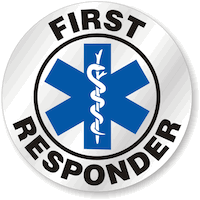PTSD and Suicide
Part 1 – of a series on Recognizing, Living with and Resolving Trauma
Every event we experience directly or indirectly has an impact on our nervous system – for better or otherwise. Current research suggests that, 80% of our mind is comprised of unconscious actions (impulses, urges, cravings, instincts and drives). The remaining 20% is conscious – that which we are aware of with regard to person, place and time.
Each of us has a different threshold of activation of our Autonomic Nervous System, or ANS (which is unconscious and reacts very quickly – in some instances, fractions of a second). The ANS has 2 sub-branches, sympathetic (stimulating) and parasympathetic (sedating). We know this as the Fight, Flight or Freeze response. The ANS system allows us to quickly respond to danger and is also common to most higher functioning animal species. We need our ANS to live well.
Nature (genetics) and nurture (environment) are key factors when it comes to activating the ANS. Experts who study PTSD and suicide report that the mind records trauma exposure much like our bodies record exposure to radiation. There is a point at which we exceed the ability to process and “shake it off” – particularly if the exposure(s) happen close together and at a young age. New PTSD studies indicate that “fear circuitry in the brain never rests”. The idea is that the more traumas the mind is exposed to, the more the fear circuitry has to keep it busy. The same way a song gets stuck on “repeat” in our head – whether or not we like the song.
Also the Kaiser ACES study indicates that if we have had too much negative experience which could lead to a diagnosis of PTSD, it increases our risk for suicide dramatically. Thus, there IS a connection between PTSD and suicide.
We really have to be aware and careful of what we expose ourselves to regarding trauma – no different than second hand smoke, heavy metals, sodium and animal fats. The unconscious mind cannot distinguish between real and unreal. Only the smaller conscious part of mind has this ability. If we expose ourselves to violent or scary movies or the more mundane nightly news, our sub-conscious mind believes the unbelievable and is experiencing a level of discomfort just below conscious awareness. We can be operating just below the threshold of ANS activation due to self-induced over accumulation of bothersome information and troubling entertainment choices. We have learned that risk for suicide is higher for those with PTSD. Recall that our “fear circuitry” is responsible for processing fearful and anxious emotions and regulates sensitivity to pain and negative emotions which will increase with each additional exposure.
To make matters more complicated, repeated exposure to trauma (large or small) decreases our ability to integrate information regarding the awareness of time (past, present and future). The resultant state of confusion creates a “re-experiencing” as if it was happening again, now.
Ask Yourself
Be willing to ask yourself if you have any more room for more self-inflicted negative exposures (trauma) and what the gain would be, even if you did? We are conditioned to take in negativity (minor trauma) and think little of it. Those with a family history of depression and those who have had high exposure to traumas need to be even more aware of their small tolerance for more.
Depression is degenerative – untreated it becomes progressively more severe and in general, requires professional care to treat. All of us though, would do better to reduce our exposure to undue negativity. In order to live well, we need our ANS to function well.
If we can’t reduce our exposure to stress or trauma, we need to treat it. This can help us to clear out unresolved memories and become more resilient.
Please read Part 2 of this article, by linking here.
Also, note this link to the Veteran’s Affairs website,
Or this article from the VA website about
Reference: http://medicalxpress.com/news/2013-05-combat-veterans-post-traumatic-stress-disorder.html#jCp


